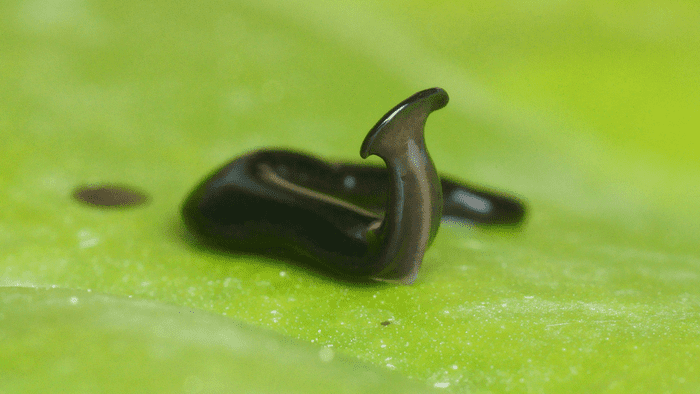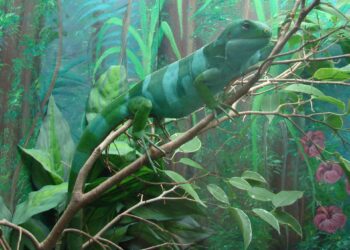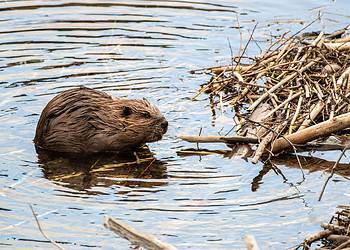Researchers have described two species of worms sporting a distinctive hammerhead look. The worms, discovered in parts of Europe and Africa, are likely invasive species and could wreak havoc on soil biodiversity.

As the world is becoming increasingly globalized, species are being brought from one part of the world to the other. These “alien” species have the potential to overrun the new ecosystem they’re brought to, and oftentimes, by the time you realize there’s a problem, there’s little you can do about it.
Oftentimes, you don’t even notice these invasive species unless you’re really paying attention — and this is exactly the case here.
An international team led by Professor Jean-Lou Justine from ISYEB (Muséum National d’Histoire Naturelle, Paris, France) described two new species of hammerhead flatworms. This is the first study of these species, although flatworms have been invading Europe for some time.
“We were surprised at first that some of the species which were invading Europe, a place where biodiversity is supposed to be well known, did not even have a name. That was the case of Obama nungara, a species described only in 2016,” Justine told ZME Science. The researchers did not give it a name at the time, though they did describe it in a 2020 paper with a charming title. The name Obama is formed by a composition of the Tupi words oba (leaf) and ma (animal), a reference to its body shape.
“This is also the case for the two new species described in this paper, they had no names and were never described in their countries of origin.”
Hammerhead worms are predatory creatures, much like their shark namesakes. They can track their prey (typically other worms or mollusks), and bear a distinctive shape on their head region, which helps them creep over the soil substrate.

A number of hammerhead worms have been described by scientists but, in many cases, the researchers don’t describe them in their land of origin, instead finding them in countries that they have already invaded. For instance, two previously described species (Bipalium pennsylvanicum and Bipalium adventitium) originate from Asia but were first reported from the US. The two newest species follow the same trend.
“I have been working on invasive land flatworms since 2013, when I discovered that gardens in France (and Europe) were invaded by bizarre worms and that almost no scientist was working on this problem. Leigh Winsor, the Australian member of our team, has been working on them since the 80’s,” Justine adds.
The first new species was named Humbertium covidum, as an homage to the victims of COVID-19, but also because much of the work was carried out during the COVID-19 lockdown.
“Due to the pandemic, during the lockdowns most of us were home, with our laboratory closed. No field expeditions were possible. I convinced my colleagues to gather all the information we had about these flatworms, do the computer analyses, and finally write this very long paper. We decided to name one of the species “covidum”, paying homage to the victims of the pandemic.”
The worm was found in two gardens in the Pyrénées-Atlantiques (France) and also in Veneto (Italy). Although some hammerhead worms can reach up to one meter, this one is small (3 cm) and looks uniformly metallic black — an unusual color among hammerhead flatworms.
These creatures are not easy to characterize based on their morphology alone, so researchers decided to use mitochondrial genetic analysis, which can provide a lot of information about the origin of this species and which other species it is related to. This species appears to have originated in Asia and is potentially invasive. By analyzing the contents of its stomach, researchers also found that it eats snails.
The second species, Diversibipalium mayottensis was only found in Mayotte (a French island in the Mozambique Channel, Indian Ocean). The species is as small as the other one, but instead of a metallic black, it exhibits a spectacular green-blue iridescence. Based on genetic analysis, this species appears to belong to a “sister group” of all other hammerhead flatworms, which means it could help researchers understand how these creatures evolved. Its origin could be Madagascar, but it’s not entirely clear. Presumably, at some point in the past, people brought plants from Madagascar and unknowingly, also brought the worm.
“All land flatworms are generally transported with potted plants,” Justine says. “For the species in Europe, Humbertium covidum, it is likely that the species was transported in recent years, from Asia, with some imported plant. For the species in Mayotte, Diversibipalium mayottensis, it is likely that it comes from Madagascar, but the transport might have happened a long time ago, perhaps even centuries ago, by traditional exchanges between islands in this part of Africa.”
Although finding new species is generally good news, this is not necessarily the case here. These flatworms are probably bad news, especially if they're not in their natural environment. For instance, one study found that one single worm species from New Zealand became invasive in the UK, and when it became established, earthworm biomass declined by 20%.
"All land flatworms are predators of the other animals of the soil fauna, and, as such, can threaten the biodiversity and ecological balance of species in a soil. However, there are only a very few papers in which their impact was thoroughly studied, because these studies are long and expensive," Justine explained in an email to ZME Science.
The study comes with a clear warning: invasive species are probably more prevalent than we realize. In the US alone, invasive species are estimated to cause damage of around $120 billion, and the figure is likely to increase as the world becomes more and more interconnected. Unfortunately, when it comes to dealing with invasive hammerhead worms, prevention is pretty much our only weapon.
"Basically, there is not much to be done once a land flatworm has invaded a country. Prevention is the key, we need to avoid importing new flatworms (that is true for Europe and US)," Justine concludes.
The study was published in the journal PeerJ.






